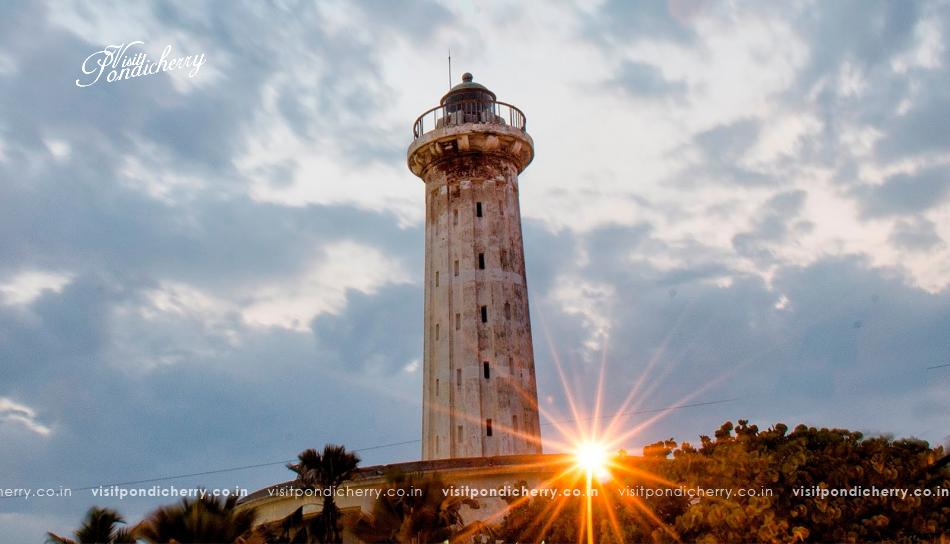


A lighthouse was constructed in Pondicherry in the nineteenth century by the French rulers. A new lighthouse was constructed in 20th century by the government of India. The old lighthouse had first beamed light on 1 September 1836. The new lighthouse started functioning in 1979.
In nineteenth century, the only light to guide ships coming to Pondicherry was atop the Red Hills which was inadequate. The project was finally taken up during the tenure of Governor Saint Simon in 1835. Louis Guerre was the engineer of the project. The foundation stone for the lighthouse was laid at the end of 1835 and the inauguration ceremony took place in February 1836.
The height of the lighthouse is 29 meters. It has a round tower and a square base. The cost of construction was 10,000 francs. The foundation has a depth of nine meters. Its light beam could be seen from a distance of 15 miles. The light source consisted of six oil lamps and two reflectors. The light source was converted to electric lamps in 1913. The power of the lamp was increased in 1931. The new lamp had a range of 26 nautical miles. It took 36 seconds for one full rotation of the beam.